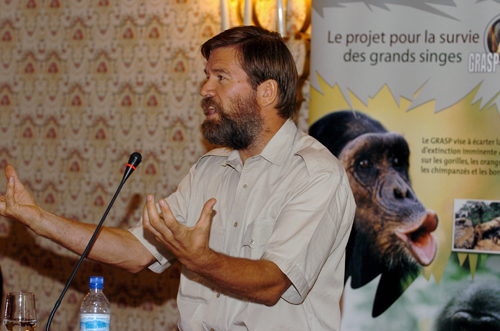|
|
|
|
|
|
|
Daily Web Coverage
|
|
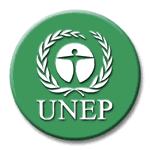 |
|
|
|
|
|
Summary report
|
|
|
|
| 12 September 2005 |
 |
 |
 |
|
|
|
|
Highlights from Wednesday, 7 September 2005
The
first meeting of the Council of the
Great Apes Survival Project (GRASP
Council) met on Wednesday in plenary
throughout the day. In the morning,
delegates elected Moses Mapesa Wafula,
Executive Director, Uganda Wildlife
Authority, as President of GRASP
Council, adopted the agenda, received
reports from the GRASP Interim Executive
Committee (IEC), the Interim Scientific
Commission, the Technical Support Team,
and the GRASP secretariat, and began
consideration of proposed revisions to
the draft GRASP Global Strategy. In the
afternoon, delegates agreed the draft
GRASP Global Strategy and the draft
rules for the organization and
management of the GRASP Partnership.
Opening of the meeting with the
Secretary-General of the IGM/GRASP &
Election of the Chair of the GRASP
Council Meeting/Adoption of the Agenda
Samy Mankoto, Secretary
General of GRASP, opened the meeting by
summarizing the work of the
Intergovernmental Meeting (IGM) and
outlining the agenda for the GRASP
Council meeting. He then introduced
Moses
Mapesa Wafula, Executive Director,
Uganda Wildlife Authority and Chair of
the IEC. Delegates then acclaimed Mr
Mapesa Wafula as Chair of the GRASP
Council.
In
his introductory remarks, Chair Mapesa
Wafula highlighted Uganda’s role in
activities to protect great apes, and
indicated his willingness to share
Uganda’s work with others. Delegates
then approved the agenda as presented.
|
|
| |
 |
Mark Leighton, Co-Chair
of the Interim Scientific
Commission (ISC) presents the
report of the Commission
|
|
|
|
|
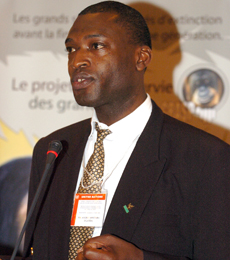 |
|
Aggrey Rwetsiba,
Monitoring and Research
Coordinator of the Uganda
Wildlife Authority in Kampala,
Uganda presents the report of
the GRASP Interim Executive
Committee |
|
| |
|
|
Reports from the GRASP Interim Executive
Committee, Interim Scientific
Commission, Technical Support Team, and
the GRASP Secretariat
Chair
Mapesa Wafula summarized the work of the
Interim Executive Committee (IEC),
noting that the purpose of the IEC was
twofold: to ensure that GRASP partners
are part of the decision-making process
for great ape conservation; and, to
allow for a governing structure to exist
until formal rules are adopted.
Aggrey Rwetsiba, Uganda Wildlife
Authority, then summarized the Terms of
Reference for the IEC, and highlighted
the organization of the IGM as a key
activity of the IEC. He concluded by
urging delegates to continue to work
collaboratively and noted that all
partners have a leadership position in
the preservation of great apes.
Dr. Mark
Leighton, co-chair of the ISC, next
outlined the ISC’s work to date,
highlighting the preparation of a draft
preliminary list of priority populations
and sites of the 14 great ape taxa,
compiled by taxon-specific expert
working groups. He emphasized the very
different levels of available
information for taxa and urged
range states to work with the ISC to
further develop the list. He concluded
by directing
delegates to maps depicting the
populations and sites (www.whrc.org/africa/pripops).
Mr. Ian Redmond, Head of
the GRASP Technical Support Team (TST),
then gave an overview of the
TST team members, and the role of the
TST within the GRASP Partnership which
included:
building the GRASP partnership;
providing support to the range State
focal points; raising awareness, for
example through the
Great Apes Film
Initiative (www.filmmakersforconservation.org);
and
assisting many of the range States in
developing their National great apes
survival plans (NGASPs). He concluded by
reminding delegates that they need to
decide whether there would be further
TSTs under the permanent GRASP
structure. |
| |
|
|
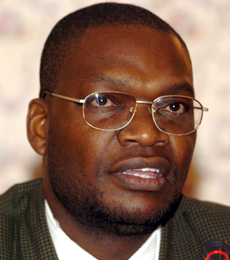 |
Mapesa Wafula, the Chair
of the First GRASP Council
Meeting
|
|
|
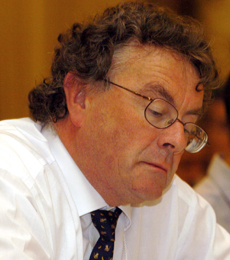 |
|
Robert Hepworh, Executive
Secretary of the Convention on
Migratory Species |
|
|
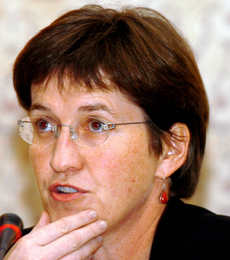 |
|
Melanie Virtue, GRASP
Secretariat, responds to
questions from the GRASP members |
|
| |
|
|
|
|
Melanie Virtue, UNEP GRASP Secretariat,
provided details on the Secretariat’s
income and expenditure from 2003-2005.
On income, she highlighted UNEP’s
commitments, and those of the
Governments of the United Kingdom,
Ireland, Germany, and Denmark, and of
the private sector. She noted that the
contract with the European Commission is
not yet finalized, and that UNEP has
therefore loaned money to GRASP with the
expectation that it will soon be
recouped. On expenditures, she cited
activities, which include NGASPs,
technical assistance, field projects,
partnership strengthening,
information/awareness raising,
fundraising, and operations.
Natarajan Ishwaran, UNESCO, noted that
his organization is trying to use this
meeting as a way to look forward in
assuming specific task-related
responsibilities related to range
States, and that UNESCO wants to know
how much of the secretariat load will be
at the UN level and what can be shared
with other partners. He stated that
while they are helping with logistical
items now, this is done in an ad-hoc
manner since there is no GRASP section
at UNESCO.
Discussion:
During the ensuing discussion, the
REPUBLIC OF THE CONGO said that data
should be collected on great ape
populations in sites that are not
protected, while the CENTRAL AFRICAN
REPUBLIC and BURUNDI each suggested
specific areas that should be studied.
In response, the Interim Scientific
Commission (ISC) indicated its desire to
undertake such research. GRASP
SECRETARIAT noted the need to develop a
more systemic approach to choosing
projects, and that it is working with
ISC to develop criteria.
Responding to a question about
non-governmental contributions, the
ORANGUTAN FOUNDATION-UK cited the types
of contributions that such organizations
make. LUKURU WILDLIFE RESEARCH PROJECT
asked about GRASP’s relationship with
GRASP-Japan and GRASP-Australia, to
which UNESCO and IAN REDMOND noted that
while each is self-financed and
self-generated they are collaborating
with GRASP. CENTRAL AFRICAN REPUBLIC,
with support from the TST, highlighted
the importance of public
awareness-raising. |
|
|
Global Strategy for the Survival
of Great Apes
The
GRASP Council considered a conference
room paper with proposed revisions to
the draft GRASP Global Strategy, which
was introduced by Stanley Johnson.
Delegates agreed to the revised text,
which included: adding promotion of
education and sensitization of local
populations to GRASP’s immediate
objectives; the establishment of an
internal focal point to inform
international and regional agencies and
groupings of GRASP activities; and to
remove reference to viability of great
ape populations in the overall goal of
GRASP on the proviso that GRASP work
plans specify that viability is used as
a criterion when prioritizing
populations for conservation.
Rules for the Organization and
Management of the GRASP Partnership
Stanley Johnson then led delegates
through a clause-by-clause review of the
rules for the organization and
management. Among the major areas of
discussion was a proposal by UGANDA that
the chair of the Executive Committee and
GRASP Council should be the same person.
Delegates instead agreed to a proposal
by CAMEROON that the posts remain
separate but that the Chair of the
Executive Committee comes from a range
state. Delegates also agreed to increase
the size of the Executive Committee to
11 members (4 from range States, 2 from
non-range States, one member each from
UNEP and UNESCO, one from biodiversity
and conservation-related MEAs and
international organizations and
institutions, and 2 from
non-governmental organizations) and to
make 5 members the minimum quorum for
the meeting. The GRASP Council then
agreed to adopt the rules, as amended.
|
|
|
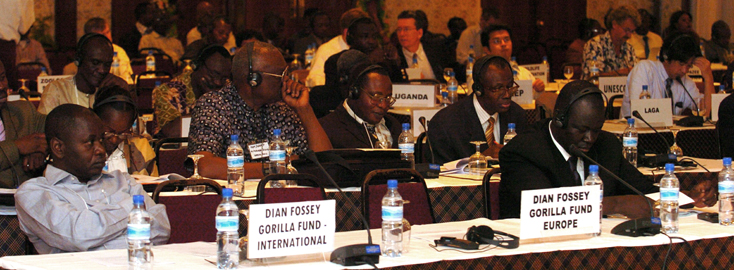 |
|
Participants discussed the draft
rules for the organization and
the management of the GRASP
Partnership throughout the
afternoon session |
|
|
|
|
|
|
|
|
|
|
|
|
|
|
|

